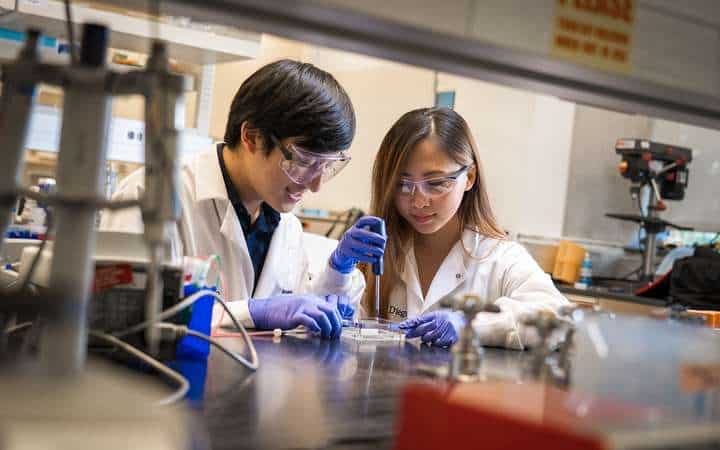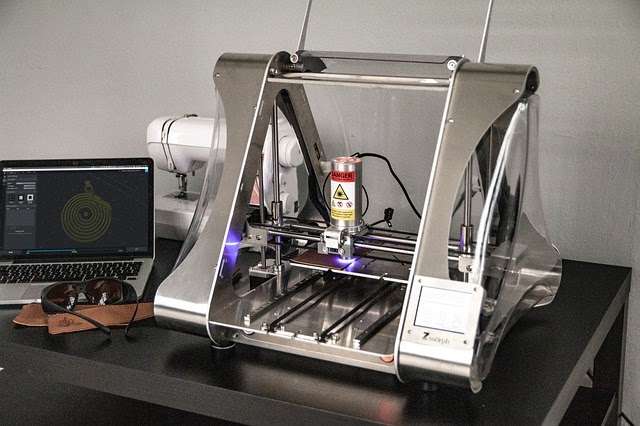The way technology has changed our lives for the better is apparent, especially when it comes to the many benefits of 3D printing. 3D modeling and printing in the biomedical field is an innovative and outside-the-box way of changing the whole health care system. How does it work? Essentially, it’s a process where biological material or the combination of organic and synthetic material is deposited layer by layer until a tissue-like material is formed. This allows medical specialists to treat and actually help more patients while reducing the time required for each treatment. 3D printing has various interesting applications and benefits in biomedical engineering, and you can learn about some here.

Shortens Surgery Time
And not only the process of surgery, but the preparation and the recovery time too. With 3D-printing technology, tissues can be printed with different densities and colors, making them anatomically correct. This gives the surgeon a physical 3D model of the desired patient anatomy that they can use to plan the surgery accurately. They will know with more precision where to make incisions, what size of the surgical tool to use, and conduct the surgery with as little distress as possible. Plus, the surgical instruments can also be custom printed for better accuracy.
Improves the Functionality of Prosthetics
Whether it’s a bone scaffold to support a splintered bone, a knee or hip replacement, or a whole prosthetic limb, 3D printing can help determine the prostheses components’ size with very high accuracy. Total knee arthroplasty is an example of a surgery that would require a prosthesis. One of the techniques used in printing prosthetics is Selective Laser Sintering, which makes highly functional parts. Depending on the prosthetic, this method uses either only nylon-based materials, such as silica sol, or a combination of nylon and titanium powder to ensure flexibility and durability.
A Very Effective Educational Tool
Seeing a 3D model of different physiologic and pathological conditions is far more educational than reading about them in books or seeing them in medical imagery for medical students. And it even eliminates the need for human cadaver dissections, which are always a safety concern. Furthermore, 3D printing can help educate the patients themselves about their own condition. As a CT or MRI scan usually contains little details for someone who isn’t medically trained, they aren’t helpful if a patient wants to learn more about their disease or injury. On the other hand, a 3D model is far easier to explain and understand to anyone.
Reduces the Chance of Transplant Rejections
3D printing also allows the modeling of implantable tissue or organs using the cells of the recipient. This eliminates the need for a foreign donor, waiting for a donation, and the possible rejection. It is most commonly used in printing synthetic skin for transplanting to patients who suffered burn injuries. Another example may be printing heart valves using a combination of the donor’s own cells and biocompatible materials for a patient with malfunctioning heart valves. But even 3D printing an entire human heart is possible, although only for research purposes for now.
Improves Forensic Bioscience
Forensic bioscience is often a deciding factor in the courtroom in criminal cases, and 3d printing can only add to that. Besides determining the actual cause of death in more difficult deaths, 3D modeling could be used to demonstrate various anatomic abnormalities or injuries to jury members. This way, they will be able to actually see in 3D the fractures, damages done by a projectile, or any foreign object, instead of only reading about it in the pathology report.
Personalized Drug 3D Printing
Sometimes it’s hard to determine the exact dosage of a drug for a patient or even the correct drug as this may depend on many factors. For example, a patient may be allergic to some components of the drug. In this case, this component could be eliminated from the printed layers. Also, 3D printed drugs have a different consistency than regular ones, which means they will dissolve and digest faster and easier, putting less strain on the liver and kidneys.

If you haven’t known before how useful 3D printing can be in biomedical engineering, now you know a little more about it. While 3D printing is a fascinating process in general, using it bioscience can take it to a whole other level. It not only facilitates the work of scientists and health practitioners but is also cost-effective. After all, it’s a lot cheaper to design and print new tissues than to grow them in a lab. Not to mention the reduction in medical costs for the patient.





